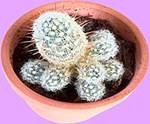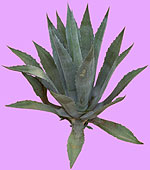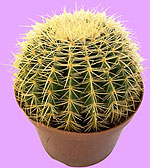
Spine leaves of cactus
|
Back Lesson 22
|
Home Cover Page
|
Top Lesson 23
|
Next Referance
|
Lesson Twenty Three: Adaptations of Plants
Materials (for each group)
Begin the lesson by posing focus questions
Adaptations are special features that allow plants and animals to live in particular habitats. The teacher is expected to provide students with pictures of local, desert, and tropical rain forest habitats and plants. Ask students to separate them by the places they come from. Let the students create a bulletin board panel for each habitat.
Activities: Investigation of plant adaptations to different habitats
Students will explore the roles of succulence and tough outer coverings in preventing water loss. Students will infer that leaves like these help plants survive in dry places.
Procedure
Repeat with the thicker sponge. Put the measuring cups next to each other. Which one has more water? (Older children can subtract to measure how much more the thick sponge holds.) Which sponge will dry out faster?
Remind the class that some plants live in places with lots of water, while others live in places with very little water.
Where would thick leaves be better? Thin leaves? Why?
Thick leaves like thick sponges can hold a large amount of water. In places where rain falls infrequently, plants with thick, sponge-like succulent leaves survive the droughts.
For example, The Desert
The desert is very dry and often hot. Annual rainfall averages less than 10 mm per year, and that rain often comes all at the same time. The rest of the year is very dry. There is a lot of direct sunlight shining on the plants. The soil is often sandy or rocky and unable to hold much water. Winds are often strong, and dry out plants. Plants are exposed to extreme temperatures and drought conditions. Plants must cope with extensive water loss. Plant Adaptations

Spine leaves of cactus

Waxy coating on its leaves

Light colored hair that helps shade the plant.
Fig. 23.1: Plant Adaptations
Plants are classified according to where they grow:
Hydrophytes: Hydro means waterplants that grow in water, e.g., elodea, water lilies, seaweeds, algae.
The students should be organized into groups of 8-10 and write a short note on the following.